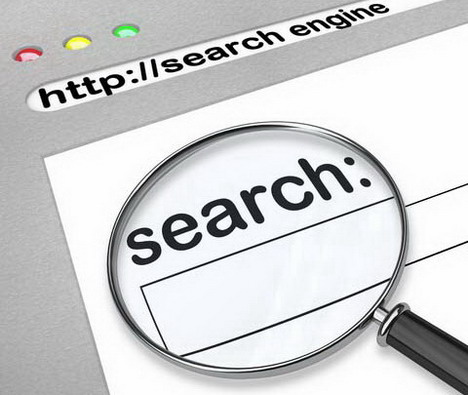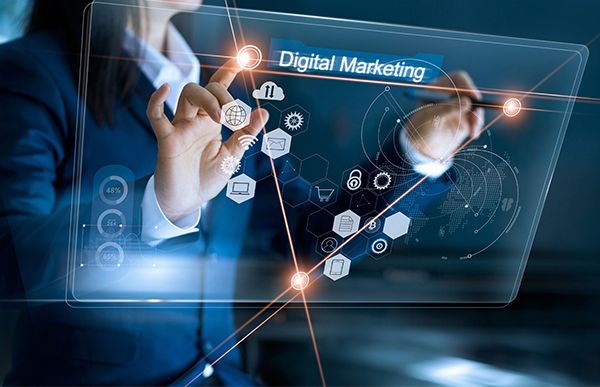
Marketing has gone through a significant shift in the dynamic world of the digital age. A sophisticated and multifaceted ecosystem of digital marketing methods, ranging from social media advertising to search engine optimization (SEO), content marketing, email campaigns, and more, has emerged because of what started as simple online banner ads. Digital marketing is much more than just product promotion; it’s about building deep bonds with customers, developing brands, and driving expansion in businesses.
In order to show how far we’ve gone and what lies ahead for businesses and marketers as well, this blog talks about the development of strategies for digital marketing.
The Birth of Digital Marketing: The 1990s
With the introduction of the World Wide Web (WWW) in 1991, digital marketing the way we understand it now began in the late 20th century. Marketing opportunities and internet access were restricted during this period. Nonetheless, the opportunity was there, and the first clickable banner ad was created in 1994 when an AT&T advertising showed up on Hotwired.
Digital marketing was very basic in the beginning, but marketers soon discovered that the internet offered exceptional potential to reach a wider audience. The majority of the advertising was banners, but they frequently lacked customization and targeting—two things we now know are essential.
The Rise of Search Engines: Late 1990s to Early 2000s

Search engines became increasingly important as the internet grew to assist people in finding relevant data. Search engines like Yahoo!, AltaVista, and, especially, Google, which emerged in 1998, gained the popularity in the late 1990s and early 2000s.
As search engines have grown in popularity, Search Engine Optimization, or SEO, has become an important strategy for companies trying to become more visible online. As marketers started optimizing WebPages for certain keywords, a competition to rank higher in search engine results started to develop. With a focus on keyword optimization, backlinks, and Meta tags to increase organic traffic, SEO has become the preferred strategy for digital marketing.
At the same time, pay-per-click (PPC) advertising models started to take form. These models, such as Google AdWords, which introduced in 2000, allow the advertisers to purchase ad positions at the top of search engine results, giving firms an instant visibility.
The Emergence of Social Media: Mid-2000s
Social media was developed in the middle of the 2000s, and it completely altered how people communicated online. Digital marketing found new popularity because of websites like Facebook (2004), YouTube (2005), and Twitter (2006). Social media marketing swiftly established itself as an essential component of every marketing plan, providing firms with prior to unheard-of chances to interact more personally with their customers.
Since social media platforms have grown in popularity, marketers have also started using them for community development, influencer collaborations, and paid advertising. Marketing became more conversational and focused on the needs of the customer as a result of the capacity to produce viral content and engage with customers directly.
Mobile and Video Marketing: The 2010s

With the arrival of smartphones in the 2010s, the area of digital marketing experienced an extended evolution. Marketers have to adapt their strategy for mobile devices as mobile usage exceeded desktop traffic. Engaging audiences while on the go has become dependent on mobile-friendly websites, applications, and location-based services.
Because of the platforms like YouTube, and Instagram, the popularity of video content has also skyrocketed. Storytelling, brand exposure, and engagement have all benefited greatly from the use of video marketing. Video content started to be used by businesses for live streaming, product demos, tutorials, and other purposes.
Email marketing changed during this period as well, concentrating on automation, segmentation, and customization. With the use of consumer data and insights, marketers were able to offer audiences messages that were highly targeted and customized, which greatly increased conversion rates.
The Age of Big Data and AI: Late 2010s to Early 2020s
The technology supporting digital marketing also developed in addition to it. Big data, artificial intelligence (AI), and machine learning gained importance in the late 2010s and are now an essential component of modern digital marketing campaigns. With the huge amount of data available to them now, marketers may better understand their target consumers and develop hyper-targeted campaigns.
The way marketers communicate with consumers has changed dramatically as a result of AI-powered technologies like chatbots, predictive analytics, and tailored content suggestions. These technologies provide real-time interactions, predictive modelling, and automation, therefore empowering organizations to more precisely optimize their marketing efforts.
In order to give their consumers useful, important material, businesses around this time also began to place a lot of emphasis on content marketing, making significant investments in blogs, articles, eBooks, and whitepapers. When voice assistants like Siri, Alexa, and Google Assistant grew more popular, SEO also changed to focus a higher priority on user intention, semantic search, and voice search optimization.
The Current State of Digital Marketing: 2024 and Beyond

It’s more complicated than ever to promote digitally these days. In order to provide smooth experiences for customers across connections, firms are utilizing an integrated strategy to digital marketing as we reach 2024. This involves merging distinct channels and techniques. In 2024, the following major developments will have shaped the field of digital marketing:
- Omnichannel Marketing: Consumers engage with companies through a variety of channels these days, including social media, email, mobile applications, websites, and even physical storefronts. The goal of omnichannel marketing is to give consumers, irrespective of the channel they utilize, a strong, consistent experience.
- Personalization at Scale: The level of personalisation has increased dramatically due to advances in AI and machine learning. With the help of their prior interactions, preferences, and behaviours, marketers can now target specific consumers with offers and information that are extremely relevant to them.
- Interactive Content: There is a growing trend of using interactive content to engage audiences, such as polls, quizzes, and Augmented Reality (AR) experiences. Deeper involvement with the company is encouraged by this kind of content in addition to its ability to gain attention.
- Sustainability and Purpose-Driven Marketing: Customers are increasingly aware of social responsibility and sustainability in recent years. Customers, particularly Gen Z and younger generations, are becoming more open to brands that match their marketing initiatives with social concerns, environmental sustainability, and ethical practices.
- Voice Search and Conversational AI: To remain competitive, customer service plans must now incorporate chatbots and optimize for voice search, given the growing use of speech-activated devices and conversational AI.
- Content Experience: Creating a smooth content experience across many platforms is the main goal of marketers. Producing content alone is no longer sufficient; the context of how, when, and where it is consumed also matters.
The Future of Digital Marketing

Further new advances will be expected in the field of digital marketing in the future. Automation and better customisation will be made possible by the ongoing evolution of artificial intelligence. Customers will likely be able to fully engage themselves in marketing efforts through the use of Augmented Reality (AR) and Virtual Reality (VR).
Because it reduces ad fraud and offers better transparency, block chain technology has the potential to transform digital advertising. Additionally, marketers will need to figure out how to strike a balance between privacy and customization as worries about data privacy rise. This will help them deal with laws like the GDPR and yet provide value to customers.
Conclusion
The development of strategies for digital marketing has been an interesting journey, influenced by shifting customer preferences, technology breakthroughs, and an ever-growing digital world. Marketers have had to constantly adjust to stay ahead of the curve, from the early days of banner advertisements to the present era of AI-powered customization.
As we approach 2024, the key to effective digital marketing is combining a variety of tactics—including social media, content marketing, SEO, and more—into an integrated approach that creates value, encourages interaction, and cultivates long-lasting connections with clients. Businesses may guarantee that their digital marketing initiatives continue to be successful in the future by adopting new technology and keeping up with changing trends.
Read Also:- The Impact of AI on Business and Media Careers || Media Trial In High Profile Court Cases

